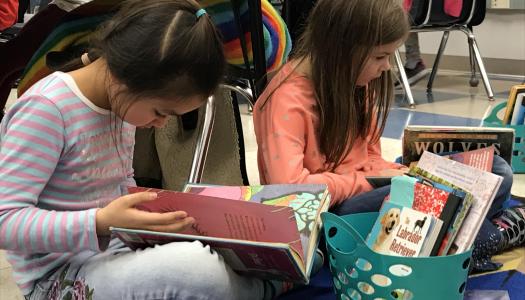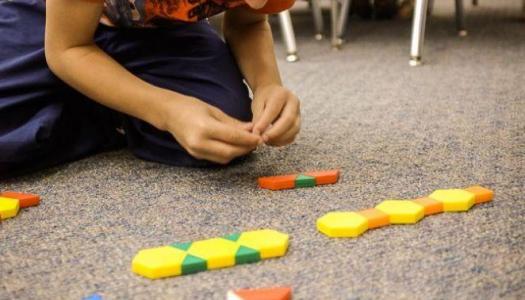Lori Sabo
July 22, 2016
Issue #418
When we moved into our house a year ago, I unpacked the glasses and plates into the cupboard closest to the kitchen table. The thinking was, It will be easy to grab what we need when we set the table.
What we've realized since then is that we tend to want a glass when we are by the sink or the refrigerator. So, I moved the glasses to the cupboard by the refrigerator, and it has turned out to be more efficient.
It was a small revision. I didn’t rearrange the whole kitchen. I didn’t need to. One little adjustment made things better.
Likewise, when we look at our classroom practice, sometimes one small shift can make a big difference. We shouldn’t feel tied to something we started with just because it is already in place a certain way. Instead, we should consider our organization, classroom design, procedures, or processes and see if there is one thing that isn't working as well as we'd like it to, and then make a change.

For example, I had one set of chimes in our gathering space for our quiet signal. When I walked toward it, students had a tendency to break their stamina to watch. By putting another set in the middle of the room and one by the door near the hall, I could surreptitiously move to chimes without being a distraction.
Before Gail added a small basket to her gathering space, she would often have to hunt for items she needed, breaking the flow of her lesson. Now her Daily 5 check-in sheet, read-aloud, teacher editions, and whiteboard pens are always where she needs them, in a basket next to her teaching chair.
Stephanie Cummins, a second-grade teacher, realized that her students’ book boxes looked great lined up on a single shelf. Unfortunately, there was always a traffic jam when kids need to access or return them. Stephanie spread them out in the front of the room, and now they are accessed quickly and returned just as efficiently.
One of these small tweaks might work for you, too. And if you've made an adjustment that yielded big results, we want to learn from you. Head over to the Discussion Board and share with us all today.
News from The Daily CAFE
 Survey Says . . .
Survey Says . . .
We asked and you answered! This week we continue to answer your questions by providing information about the Math Daily 3 structure.
- Math Daily 3 Quick Start Guide
- Finding Effective Math Games
- Using the Math Daily 3 Structure with Your Curriculum
- Math Daily 3—Structuring Your Schedule
 Design Elements. . .
Design Elements. . .
Classroom Design—First Steps*
Now is the time to take first steps toward designing a classroom space that best supports students and their learning.
 Classroom Environment . . .
Classroom Environment . . .
Using the Power of Sound*
Used thoughtfully, sound can help create a purposeful, calm, productive classroom community.
 Focus on Health . . .
Focus on Health . . .
What Does Your Reflection Tell You?
You may see integrity and honesty reflected in the mirror, or you may experience something else.
*Available to members
Professional Development Opportunities
2016 Live Workshops
Join The 2 Sisters at a LIVE workshop to learn about current research and practices supporting Daily 5, Math Daily 3, and CAFE. Select a location below and sign up while space is still available.
| Location |
Day 1 Daily 5 + Math Daily 3 |
Day 2 CAFE |
| New Brunswick, NJ |
July 30 |
July 31 |
| Tacoma, WA |
Aug. 6 |
Aug. 7 |
| Chicago, IL |
Aug. 20 |
Aug. 21 |
| Anaheim, CA |
Sep. 17 |
Sept. 18 |
| Orlando, FL |
Oct. 8 |
Oct. 9 |
Online Seminars
Prefer short bursts of information combined with independent learning? Each session offers separate seminars on Daily 5, CAFE, and Math Daily 3.
- July 31–August 27
- August 28–September 24
- October 2–October 29
Graduate Course (3 credits)
Register for these courses and earn graduate credits while you learn.
- EDU 555: Launching Daily 5 and CAFE
- EDU 533: Launching Math Daily 3





